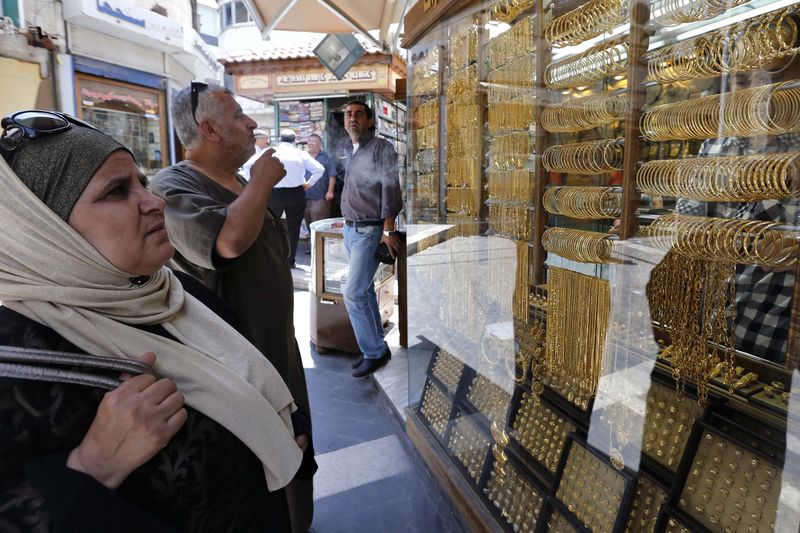Investing.com -- Gold prices edged higher on Tuesday as a combination of nerves over Brexit, Hong Kong and U.S.-China relations all kept haven assets well bid and risk assets on the defensive.
By 8:15 AM ET (1215 GMT), gold futures for delivery on the Comex exchange were up 0.8% from late Friday at $1.541.35 a troy ounce, while spot gold was up 0.2% at $1,532.29 an ounce.
The risk-off picture was also mirrored in the bond market, where the 30-year Treasury bond yield fell to 1.95%, and the notorious “inversion” of the two- and 10-year yields was still intact after the long Labor Day weekend.
Yields were falling more dramatically elsewhere, with the U.K. 10-year Gilt falling to a new all-time low of 0.34% after lawmakers initiated a plan to thwart the Brexit plans of Prime Minister Boris Johnson. The German 10-year Bund yield fell as low as -0.75%.
Data from the Commodity Futures Trading Commission on Friday suggested that portfolio bets on gold remain at historically high levels, despite edging down slightly last week. Bloomberg said its data showed ETF holdings of gold rose by over 101 tons in August, after two months in which holdings had by a combined 154 tons.
“It’s continuing to look like a bit of a crowded trade though which is showing in the momentum indicators, suggesting some near-term doubt may be creeping in,” said MarketBeat’s Craig Erlam. “Bulls aren’t letting go easily, though, and continue to buy the dips on the belief that the fundamentals will ultimately deliver more gains.”
However, there are signs that the rally’s strongest fundamental factor may be losing force: analysis by the World Gold Council suggests that net purchases by central banks fell by nearly 90% in July from June to only 13.1 tons - the lowest level of monthly net purchases since August 2017, according to the WGC’s Krishan Gopal.
The countries overwhelmingly responsible for net central bank purchases were overwhelmingly China, Russia, Turkey and Kazakhstan. In the two biggest of those, China and Russia, the accumulation of foreign reserves has weakened in recent weeks, with the Chinese central bank notably embarking on a managed depreciation of the yuan.
The WGC’s data also show that Indian jewellery demand has also weakened in response to surging prices and the sharpest slowdown in Indian economic growth in seven years.
Elsewhere, silver continued to play catch-up with its more glamorous sister metal, rising 1.8% to an intraday high of $18.67 an ounce, only 9c short of the three-year high it hit last week.
Copper futures meanwhile slumped below $2.50 a pound for the first time since late 2016.
